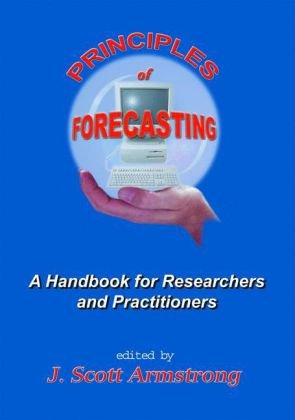

Most ebook files are in PDF format, so you can easily read them using various software such as Foxit Reader or directly on the Google Chrome browser.
Some ebook files are released by publishers in other formats such as .awz, .mobi, .epub, .fb2, etc. You may need to install specific software to read these formats on mobile/PC, such as Calibre.
Please read the tutorial at this link: https://ebookbell.com/faq
We offer FREE conversion to the popular formats you request; however, this may take some time. Therefore, right after payment, please email us, and we will try to provide the service as quickly as possible.
For some exceptional file formats or broken links (if any), please refrain from opening any disputes. Instead, email us first, and we will try to assist within a maximum of 6 hours.
EbookBell Team

4.0
6 reviewsPrinciples of Forecasting: A Handbook for Researchers andPractitioners summarizes knowledge from experts and from empirical studies. It provides guidelines that can be applied in fields such as economics, sociology, and psychology. It applies to problems such as those in finance (How much is this company worth?), marketing (Will a new product be successful?), personnel (How can we identify the best job candidates?), and production (What level of inventories should be kept?).
The book is edited by Professor J. Scott Armstrong of the Wharton School, University of Pennsylvania. Contributions were written by 40 leading experts in forecasting, and the 30 chapters cover all types of forecasting methods. There are judgmental methods such as Delphi, role-playing, and intentions studies. Quantitative methods include econometric methods, expert systems, and extrapolation. Some methods, such as conjoint analysis, analogies, and rule-based forecasting, integrate quantitative and judgmental procedures. In each area, the authors identify what is known in the form of `if-then principles', and they summarize evidence on these principles.
The project, developed over a four-year period, represents the first book to summarize all that is known about forecasting and to present it so that it can be used by researchers and practitioners. To ensure that the principles are correct, the authors reviewed one another's papers. In addition, external reviews were provided by more than 120 experts, some of whom reviewed many of the papers. The book includes the first comprehensive forecasting dictionary.